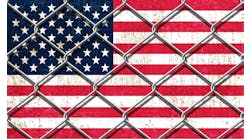A couple of new studies have come out confirming what a lot of people already know: Junk food is addictive and it’s hyped way too much to kids, especially Black and Hispanic ones.
The first study, by researchers from the University of Michigan and Virginia Tech, makes the case that “highly processed foods” should be considered just as addictive as tobacco. They point to four things that they say fatty or sugary foods have in common with cigarettes: they cause compulsive use, lead to mood-altering effects, are highly reinforcing, and can trigger intense cravings.
This isn’t a new take, of course; people have been comparing unhealthy food to cigarettes, even heroin, for decades. Counterarguments to this model point out that food is a necessity of life, and that it doesn’t have one key marker of addiction: Tolerance building, or needing increasing doses to get the same high.
The second study, from the Rudd Center for Food and Policy Health at the University of Connecticut, also replicates what other studies have shown: Minorities get targeted by junk food advertising. According to Rudd, Black consumers viewed up to 21% more such ads than white ones. It also criticized strategies like fast food chains using Black entertainers and athletes as spokespersons. Minority children are especially vulnerable to this ad blitz.
The two studies suggest remedies. Sort of. The first one lists, in an almost wistful manner, the measures eventually taken against tobacco, including restrictions on marketing to children, high taxes and reduced vending machine access. But it doesn’t directly call for such measures to be applied to food, and it’s not hard to see why, because doing so would mostly be problematic. Food taxes are universally unpopular and seen as regressive; pricing food, even junk food, at a tax rate remotely comparable to tobacco would in all likelihood incite a furious backlash. As for keeping junk food out of vending machines, I have no idea how a mandate like that could possibly work or be enforced.
Strict measures like that founder because of the fundamental difference between food and drugs. No one needs tobacco or recreational narcotics to live, but we all need food. Sequestering certain kinds of food from our lives is a lot harder than keeping away from, say, heroin. In addition, the line between unhealthy and not-unhealthy food is sometimes a blurry one, even with hard standards for fat, added sugar, etc.
A better bet is restricting marketing to children, which both studies recommend. But that won’t come easy. The food industry spent millions of dollars during the Obama administration to kill off guidelines – not regulations, just guidelines – that would have called on them to cut back on junk-food ads to kids.
As I’ve written before, it’s silly to depend on the food industry to police itself in these matters. Most food companies, especially the biggest ones, make most of their money from selling foods and beverages that could fairly be characterized as unhealthy. If improvements come in America’s diet, they won’t come from voluntary action from Big Food.
No, if we want things like reasonably informative front-of-pack labels and meaningful restrictions on advertising to children, we’ll have to impose them on the industry. That means government will have to take the large responsibility of developing mandates that are reasonable, enforceable and not overly disruptive to the market.
And Big Food has some responsibility here, too: Stop reflexively opposing and lobbying against every single food-related health measure that gets proposed. You can’t be responsible collectively for ensuring America eats properly, but you should at least avoid casting yourself as the enemy of good nutrition.


